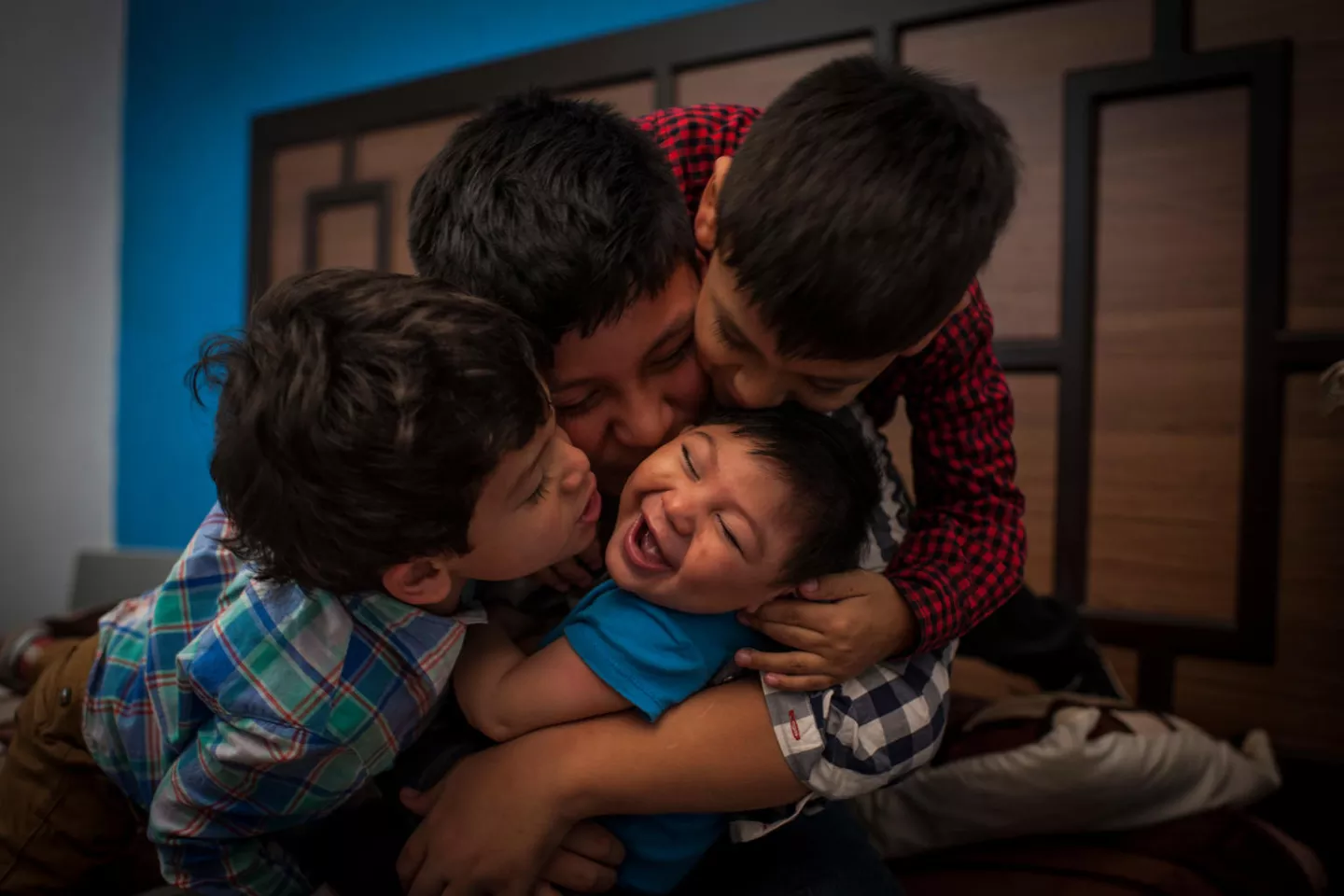NEW YORK, 10 November 2021 – There are an estimated 240 million children with disabilities worldwide, according to a new UNICEF report. The report finds that children with disabilities are at a disadvantage compared to their non-disabled peers across most indicators of child well-being.
“This new research confirms what we already knew: children with disabilities face many, and often compound, challenges to realizing their rights,” said UNICEF Executive Director Henrietta Fore. “By almost every measure, from access to education to being read to at home, children with disabilities are less likely to be considered or heard. Too often, children with disabilities are simply left behind.”
The report contains internationally comparable data from 42 countries and covers more than 60 indicators of child well-being, from nutrition and health to access to water and sanitation, protection from violence and exploitation, and education. These indicators are disaggregated by type and severity of functional difficulty, child’s sex, economic status and country. The report reveals the barriers children with disabilities face to fully participate in society and why this often has negative health and social consequences.
Compared to children without disabilities, children with disabilities:
They are 24% less likely to receive early stimulation and appropriate care; 42% less likely to achieve basic literacy and numeracy skills; 25% more likely to be wasted and 34% more likely to be stunted; 53% more likely to suffer from acute respiratory infections; 49% more likely to have never attended school; 47% more likely to have not completed primary school, 33% more likely to have not completed secondary school, and 27% more likely to have not completed high school; 51% more likely to feel unhappy; 41% more likely to feel discriminated against; and 32% more likely to have been subjected to severe corporal punishment.
Yet experiences of disability vary widely. Analysis shows that there are different risks and outcomes depending on the type of disability, where a child lives, and the services available to them. This highlights the importance of designing targeted solutions to address inequalities.
Access to education is one of several themes explored in the report. Despite widespread agreement on the importance of education, children with disabilities continue to lag behind. The report finds that children with difficulties communicating or caring for themselves are the most likely to be out of school, regardless of their education level. Children with multiple disabilities have higher rates of out-of-school attendance, and the disparities are even more pronounced when the severity of the disabilities is taken into account.
“Inclusive education is not a luxury. Children with disabilities have been excluded from society for too long in a way that no child should ever be. My experience as a woman with a disability confirms this statement,” says Maria Alexandrova, 20, UNICEF Youth Advocate for Inclusive Education from Bulgaria. “No child, especially the most vulnerable, should have to fight alone for their basic human rights. We need cooperation from governments, stakeholders and NGOs to ensure that children with disabilities have equal and inclusive education.”
UNICEF works with partners at the global and local levels to help realize the rights of children with disabilities. All children, including children with disabilities, must have a say in the issues that affect their lives and be given the opportunity to fulfil their potential and claim their rights. UNICEF calls on governments to:
Provide equal opportunities for children with disabilities. Governments should work with people with disabilities to remove physical, communication, and attitudinal barriers that exclude them from society, and ensure access to birth registration, comprehensive health, nutrition, and water services, equitable education, and assistive technology. They should also work to eradicate stigma and discrimination across communities. Consult with people with disabilities and take into account the full range of disabilities and the specific needs of children and their families when providing comprehensive services and equitable quality education. This includes responsive caregiving and family-friendly policies, mental health and psychosocial support, and protection from abuse and neglect.
The analysis aims to increase the inclusion of children and young people with disabilities by ensuring that they – who account for one in ten children and young people worldwide – are considered, consulted and taken into account in decision-making.
The new global estimates of the number of children with disabilities are higher than previous estimates and are based on a more meaningful and comprehensive understanding of disability, taking into account difficulties across multiple domains of functioning, as well as symptoms of anxiety and depression.
“Exclusion is often the result of invisibility,” Fore said. “For too long, we have not had reliable data on the number of children with disabilities. Failure to count, consider and consult these children means we fail to help them reach their great potential.”
#####

